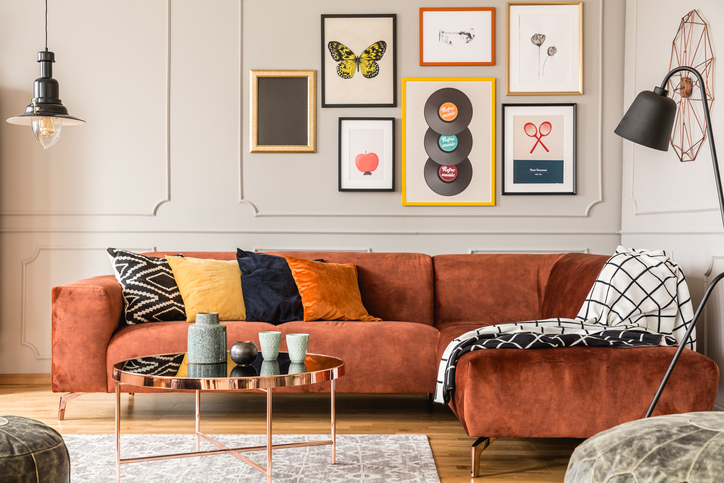
With all the home design shows out lately in addition to the pandemic lockdown, many people have taken an interest in decorating their homes with a designed feel. One designer element that keeps being mentioned is adding texture to a space, which helps a space look finished, grounded, and designed. As the weather cools down, layering fabrics and adding textures really contributes to creating a feeling of coziness and warmth to your home. But how can you do it effectively? Below we lay out for you some effective strategies for adding texture to your space.
1. Decide On Your Mood and Color Scheme
An important aspect in beginning the process of including textural elements in your space is deciding what kind of mood you want to create. Do you want this space to feel cozy? Warm? Cool? Inviting? Intimate? Is this a space where you will entertain? Where children will spend time? Is it your master bedroom? All of these questions will help you focus on what kinds of textures and colors to gravitate towards. Bright colors and patterns might be best for a children’s space whereas you may want soft, muted colors and fabrics in a more intimate or quiet setting. You can also do a combination of dark and light colors to create interest and contrast.
2. Layer Different Materials Together
Different kinds of fabrics and materials can work together to give your space a unique, textured look. For example, layering a combination of wool, velvet, and corduroy pillows on a microfiber couch or a fuzzy throw blanket on your cotton bedding takes your space from being flat to having dimension. Think about which materials you already have in your space and see how you can add other fabrics that are thicker, softer, or have built-in texture (such as something that is ribbed or fringed). You can do this with rugs and drapes, too. Anywhere where fabric can be added to your space, it’s a great idea to play with using different materials and textures to bring your space to life.
3. Same Color, Different Tones
One great way to add texture to your space is to stay within the same one or two colors in your room, but use different fabrics and materials to provide interest. This kind of look works great if you are going for a sophisticated style. You can also easily draw attention to one element in the room, such as a feature wall or a master bed, by adding bold color in just that one area.
4. Layer Patterns
Patterns can be combined in different elements in your space, but they need to be done smartly. It is easy for different patterns to clash with each other, so it’s important to keep a few guidelines in mind. Firstly, color. Make sure your patterns are part of the same color scheme in different shades so that they play off each other. Also make sure to vary the size of the patterns, or the scale. That means that if one pattern is tiny little circles, make sure another pattern isn’t also a tiny repeating shape but perhaps is a larger more angular look; try to only have one large scale pattern as part of your mix so that the overall look does not become overwhelming.
5. Mix Up The Fabric Finishes
Fabrics are generally finished with a look that is either matte, textured, slightly shiny/reflective (also described as having a light sheen), or soft. The way light interacts with these textures is what adds interest to your space, so you want to make sure you mix them up in a balanced way. Pick one finish to be your base–matte works well for this, and then add other finishes as accents to complement it. You will be amazed how paying attention to the finish of a fabric can completely transform the feel of your space.
At Howard’s Upholstery, we can help you take your space from one-note to inviting and dimensional through the use of fabrics and upholstery. We can help you with drapes, bedding, upholstery, and more so that you can love your space and feel that exudes the mood you want.
















